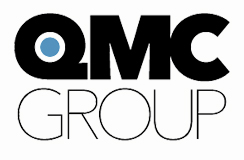Midstate Printing is currently in the market to buy a new press. We’ve narrowed our choices down to two manufacturers. Both could provide LED-UV or H-UV drying systems. Owner and Plant Manager Tom House gave me the task of gathering information on LED-UV vs H-UV drying systems. Off to Google I went. The H-UV system is proven technology and is performing well throughout the world. The LED-UV system is less so, but yet, it is making great strides in the world market.
The Long and Short of it

All UV curing systems are based upon the electromagnetic (EM) spectrum. The EM spectrum is the range of all EM radiation. The types of EM radiation that make up the EM spectrum are cosmic rays, gamma rays, x-rays, ultraviolet light, visible light, infrared light, microwaves and radio waves. For our purposes in printing we will focus on ultraviolet light. These wavelengths are measured in nanometers. The curing of inks, varnishes and coatings occurs between 220 and 395 nanometers. 220nm being the short wave and 395 being the long wave. LED-UV curing occurs in the 385-395 end of the spectrum. The Photo-initiators in UV inks and varnishes must be adjusted to the LED-UV lamp spectrum.
H-UV Curing
H-UV is a way to cure UV inks and varnishes developed by (but not exclusive to) the Komori Corporation. The system has advantages over traditional UV curing. A H-UV lamp is treated with iron (a process called doping) rendering the lamp operational in the “no ozone” wavelength of the UV spectrum. The doped H-UV lamps operate using less energy and heat. The system requires no venting of ozone. A greater range of substrates is printed because of less heat; think plastics and foils. The disadvantages of H-UV lamps are:
- An “on” life of 500-750 hours.
- Maintenance and consumable costs.
- When the machine ages reflectors and shields are cleaned or replaced.
LED-UV Curing
LED-UV has taken the curing of inks, varnishes and coatings to a new level. The LED-UV lamps cure at 385 to 395 nanometers. Therefore, inks are developed to cure in this range. Once cured by the lamps the ink turns immediately to a solid. LED-UV lamps use far less energy than the H-UV lamps. As a result the life of LED lamps extends into the 20,000-hour range. Involving no shutters and shields, LED-UV is low maintenance. Other advantages are:
- No ozone, less volatile organic compounds used, and greater energy efficiency are environmentally friendly.
- Improvement in dot structure and print gloss.
- Lower consumable costs over the life of the system.
- No waiting for lamps to warm up or cool down. It’s a on /off system.
- Easier retro-fits to existing equipment.
- Press manufacturers now offer it as an option.
Occam’s Razor
Occam’s Razor states that the simplest solution is the correct solution. Tom and I have talked to experts in the UV field. The experts feel we will be successful with either UV drying method. They agree that the advances made in the LED-UV system will put forward thinking companies at an advantage. The LED-UV system is safer for the environment and maintenance friendly. So we think that it will be a good choice for Midstate Printing.

